KODAK 35mm film delivered a knock-out result for DP Mátyás Erdély HCA on director Sean Durkin's emotional wrestling drama 'The Iron Claw'
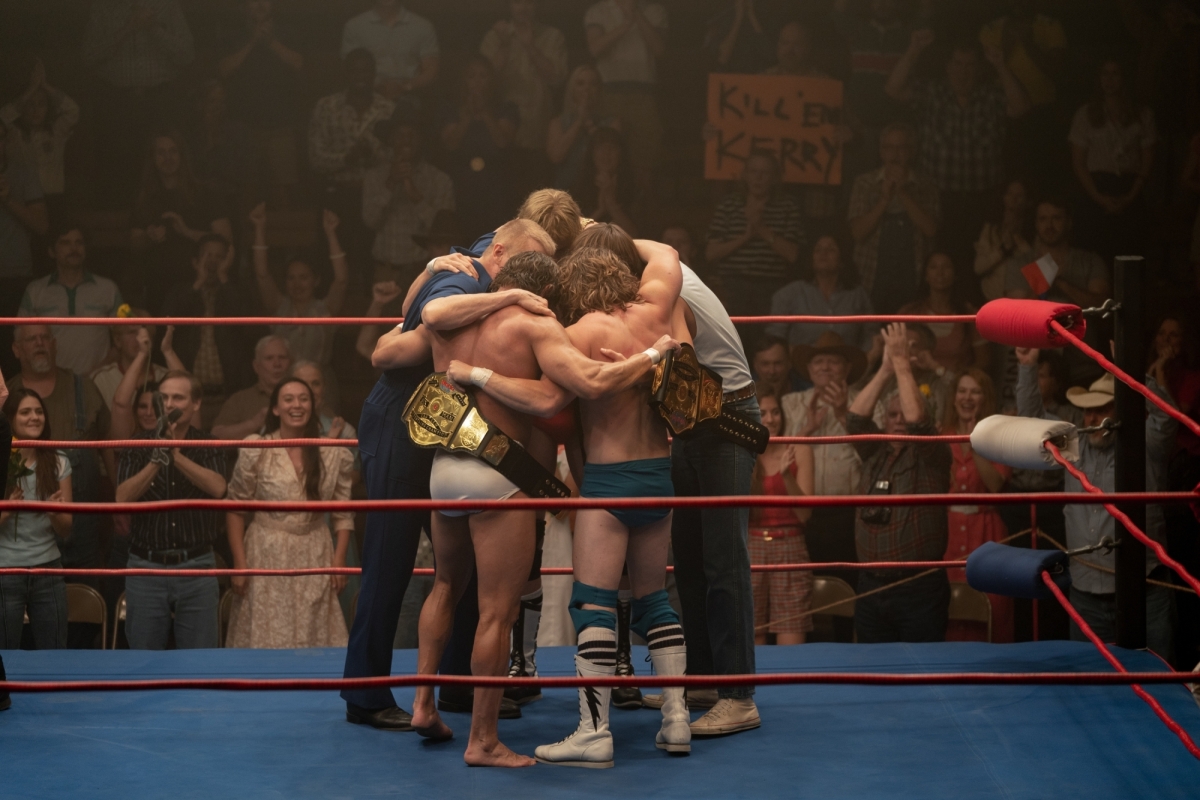
(L-R) Holt McCallany, Zac Efron, Jeremy Allen White, Stanley Simons, Harris Dickinson. Photo by Brian Roedel. All Rights Managed. Courtesy of A24.
Captured on Kodak 35mm film, and written/directed by Sean Durkin, The Iron Claw depicts the real-life triumphs and heart-breaking tragedies that befell promoter Fritz Von Erich and his sons after achieving success in the professional wrestling ring during the late 1970s and throughout the 1980s. The feature saw Durkin reunite with Hungarian DP Mátyás Erdély HCA and the chance to make a hard-hitting sports movie with profound emotional resonance.
Taking its title from a signature hand-on-head grip used by the Von Erichs, The Iron Claw depicts the lives and times of the Texas-born brothers under tutelage of their domineering, dynasty-building father, a former champion wrestler turned promoter. Raised to be the toughest, strongest and most successful warriors out there, Kevin, David, Kerry and Mike became huge stars on the Texas wrestling circuit, fighting at the Dallas Sportatorium, until the physical and psychological pressures of the family business saw three of them die through suicide or self-harm.
The film, hailed for the contrast between its compassionate exploration of family connections and depiction of macho physicality, stars Zac Efron, alongside Harris Dickinson, Jeremy Allen White and Stanley Simons as the Von Erich brothers, with Holt McCallany as their domineering father Fritz, Maura Tierney, their mother Doris, and Lily James as Kevin's girlfriend and later wife, Pam.
DP Mátyás Erdély HCA filming The Iron Claw. Photo by Devin Yalkin. All Rights Managed. Courtesy of A24.
Principal photography on The Iron Claw took place at locations around Baton Rouge, Louisiana, over 34 shooting days during October and November 2022. The exterior and interior of a voluminous former furniture store were converted to resemble the site of the original Dallas Sportatorium, where the cast were filmed performing a variety of full-length wrestling matches in front of live audiences. Other nearby venues were also used to film additional wrestling contests that also feature in the film.
Erdély is highly regarded for his outstanding cinematography on Laszlo Nemes' multi-award-winning Holocaust drama Son of Saul (2015) and the acclaimed pre-WW1 drama Sunset (2018), both of which were shot on Kodak 35mm film. The Iron Claw represents his third collaboration with Durkin, the pair having previously worked together on the BAFTA-winning British TV drama series Southcliffe, followed by Durkin's 35mm-originated psychological drama The Nest (2020).
"Sean first told me about The Iron Claw when we were shooting The Nest, and I started laughing because I thought he was joking. I didn't know anything about wrestling, nor his interest in the sport and nothing about the Von Erich family," Erdély reveals.
DP Mátyás Erdély HCA filming The Iron Claw. Photo by Devin Yalkin. All Rights Managed. Courtesy of A24.
"But I was deeply moved when he told me the heartbreaking story of the family's tragic demise, and I loved how his script showed understanding empathy and love towards the characters. I thought it would be a fascinating production that could address very difficult, universally-human subjects about love, trauma and loss, in a beautiful way.
"Although I spent a considerable amount time familiarizing myself with the Von Erich's and watching their wrestling matches, I was not particularly influenced by the way sports like this are usually covered. I actually based all of my decisions on Sean's script and the emotional sensibilities of the characters at any given moment."
In terms of the aesthetic look of the film, Erdély says, "Sean and I innately share the same taste, style and understanding of how different scenes need to be shot, and our rapport is a good as it gets. As with The Nest, this was another period piece, and we agreed early on that we would not do anything technically to impose a particular look – no filters, no look development, no vintage lenses, no visual clichés. We would simply let the locations, props, wardrobe, hair and make-up carry us to that era, using mainly Tungsten lighting and via the medium of 35mm film. The filmed image always feels so much more powerful than anything on digital.
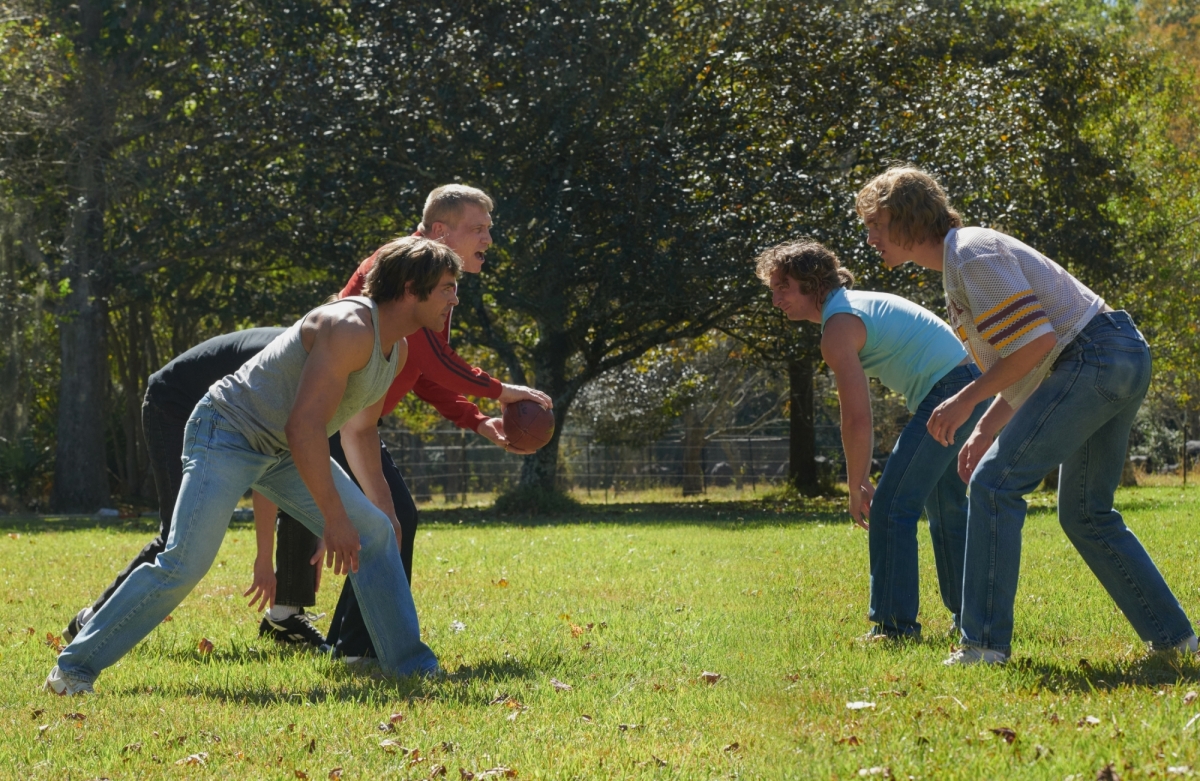
(L-R) Zac Efron, Holt McCallany, Jeremey Allen White, Harris Dickinson. Photo by Eric Chakeen. All Rights Managed. Courtesy of A24.
"However, we did talk about the necessity for this film to feel 'American' – sunny, colorful and dynamic – as well as being masculine, muscular and sweaty, all of the things that you would typically associate with the wrestling world."
Translating this into framing and equipment choices, especially optics, led Erdély to select what he describes as "classic American tools," namely Panavision Primo spherical lenses which combine high contrast, even field illumination with negligible veiling glare, ghosting or distortion.
"The Primos are classic, old-school workhorses that have been used on so many amazing movies, and deliver an elegant look, but without vintage character. Sean and I did not want to go widescreen with Anamorphic, as that would have made too strong a statement in itself. After testing, we felt in our bones that shooting spherical in the more classic rectangular 1.85:1 cinema format, with quintessential American and romantic-looking Primos, was the way to go."
DP Mátyás Erdély HCA filming The Iron Claw. Photo by Devin Yalkin. All Rights Managed. Courtesy of A24.
The Primo lens set, a Panaflex Millennium XL2 35mm camera, plus a specially adapted ARRIFLEX 235 35mm camera, which was used as an action-cam for the fight scenes, were provided by Panavision New Orleans.
"I went with the Millennium XL2 as it has flexible configurations and would be quiet enough when recording sync-sound," says the DP. "In order to keep me safe from accidental injury when filming the fights, at my request, Panavision modified the ARRIFLEX 235 by substituting the eyepiece for an SD tap and a monitor, which I used to compose shots. They also removed the batteries, so that the camera would be lighter and allow me to move quickly and easily when I was in the ring with the actors."
As to his choice for filmstocks, Erdély remarks, "Apart from the opening sequence in black and white, when I used [EASTMAN] DOUBLE-X 5222, there was only one choice for me – KODAK VISION3 500T 5219.
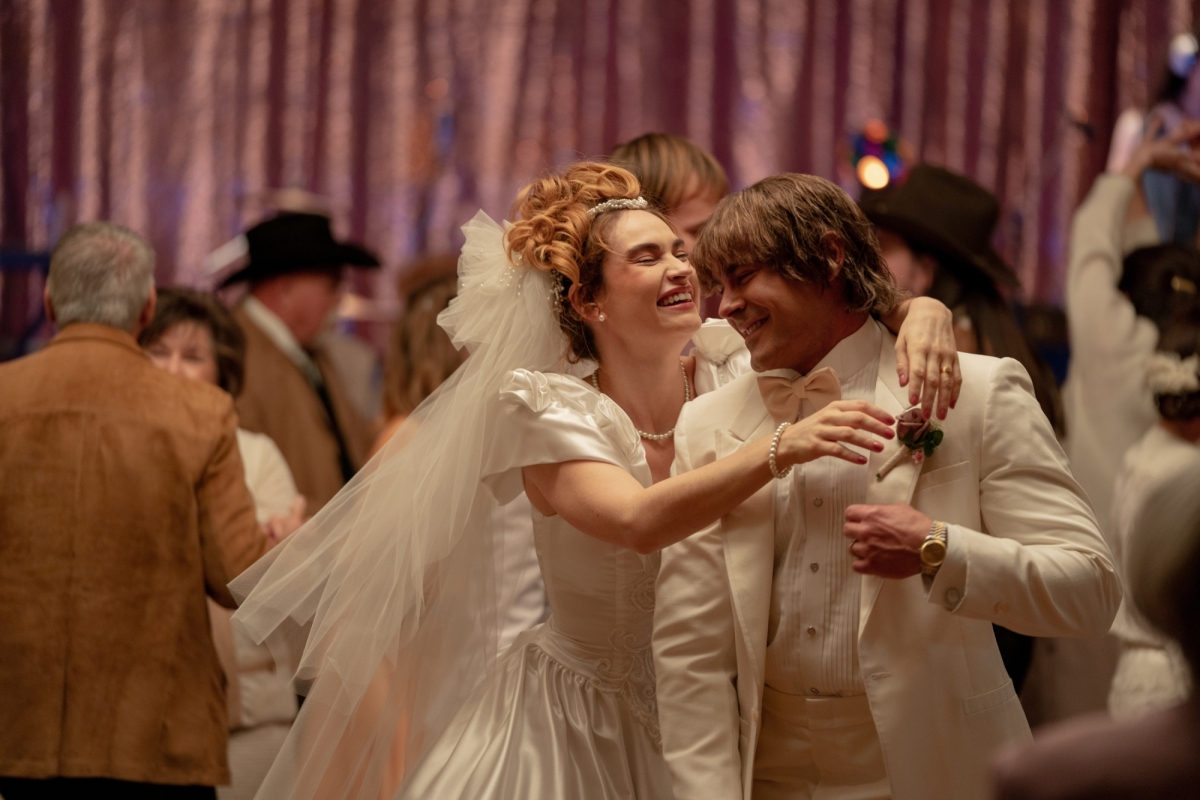
(L-R) Lily James, Zac Efron. Photo by Brian Roedel. All Rights Managed. Courtesy of A24.
"I used just the 500T on Son of Saul, Sunset and The Nest, and decided to do exactly the same on The Iron Claw. For me the 500T is Kodak's most filmic stock. I love the way it looks, especially how it renders skin and facial tones, and there was going to be a lot of skin in this film.
"From my previous experiences, I knew I could shoot with the 500T in every scenario – night and ultra-low light situations, or with ND filters on bright day interiors/exteriors. It never ceases to amaze me how much detail the 500T captures in the image – in the darkest shadows and brightest sunlight.
"Also, shooting with just one stock gives a visual consistency of color, texture and contrast, and it's very fast and economical during production too, as you don't have to deal with the logistics of loading multiple filmstocks and working out what to do with the leftovers."
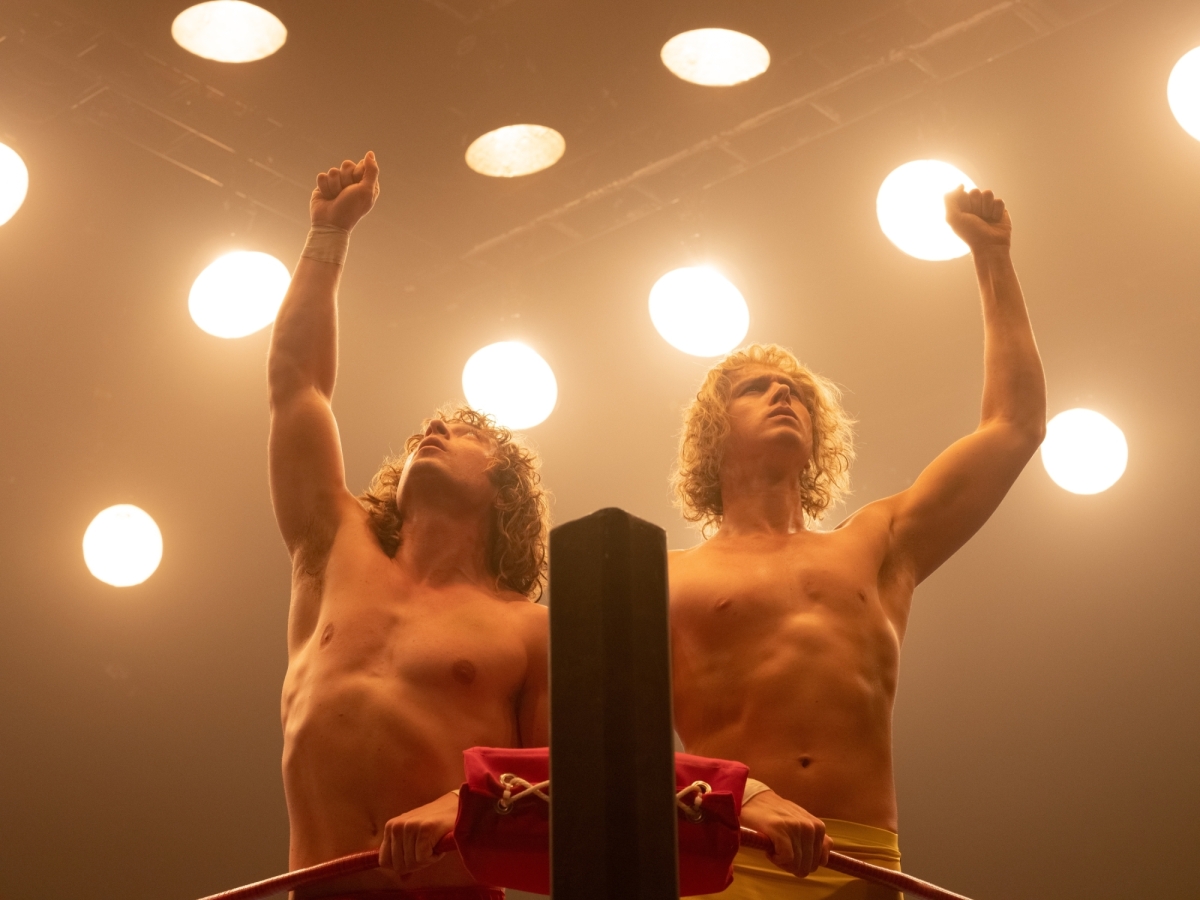
(L-R) Jeremy Allen White, Harris Dickinson. Photo by Brian Roedel. All Rights Managed. Courtesy of A24.
Recalling the opening sequence, Erdély notes, "Although I could have shot the scenes at the start of movie on color negative and then drained picture to monochrome in post, I don't like pretence or anything fake. Real B&W filmstock looks much better. The DOUBLE-X 5222 has a different grain structure, a superb scale of tonal contrast, and the way highlights tend to have a little halation around them brings an authentic sense of character to the image."
Film processing of the 500T and DOUBLE-X 5222 was done at FotoKem. 4K scanning and dailies were supervised by Company3, in Los Angeles, where colorist Sofie Friis Borup later completed the final color grade.
As with his previous productions, Erdély says the style of illumination was all about keeping things straightforward, minimalistic and naturalistic.
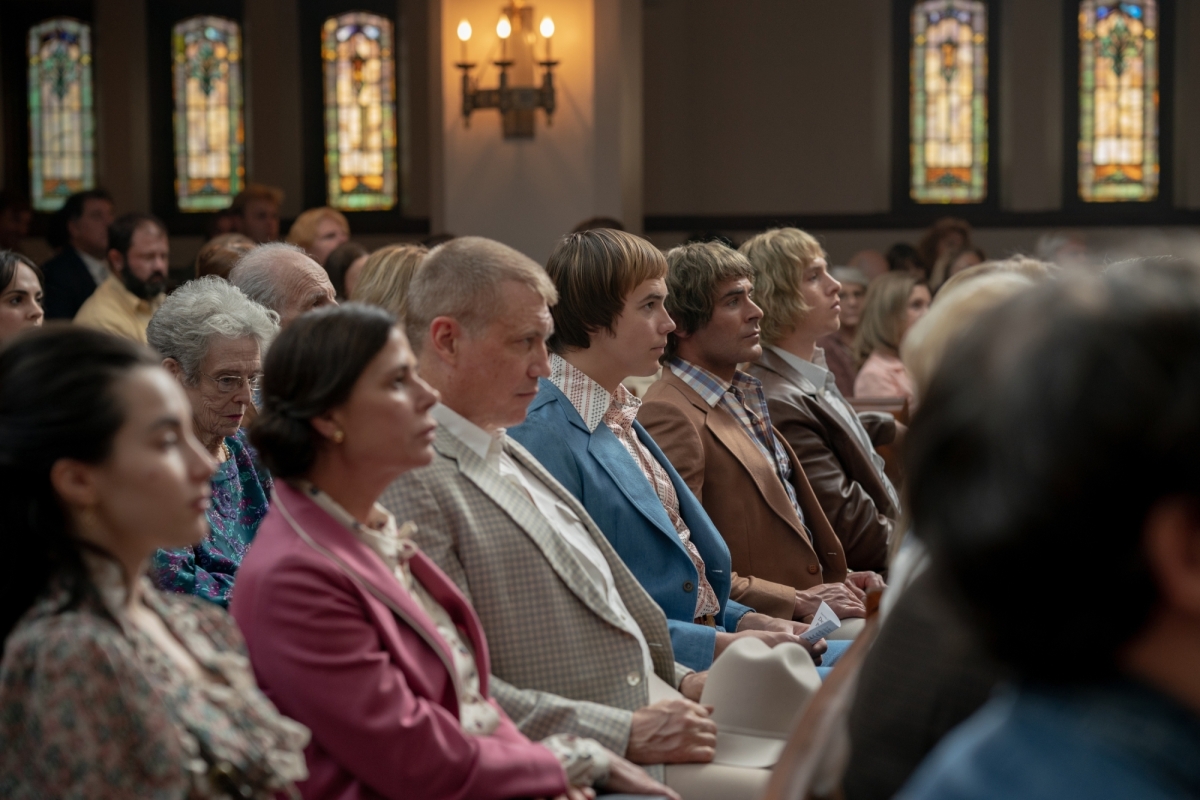
(L-R) Maura Tierney, Holt McCallany, Stanley Simons, Zac Efron, Harris Dickinson. Photo by Brian Roedel. All Rights Managed. Courtesy of A24.
"I generally like to create the emotional mood of a scene with the simplest and fewest number of lighting fixtures as possible, and this way of lighting supports working quickly," he says. "Many of the exterior day scenes were shot in available light. I lit day interiors with HMIs through the windows, and used practicals, along with a very few traditional Tungstens or LiteGear LED Lite Mats overhead, for ambience. We lit the scene at the dinner table just from the chandelier.
"Lighting the fight scenes in the Sportatorium, however, was a little more conceptual, as I followed an arc in the way wrestling contests were lit over the years. To explain, wrestling was initially very low-budget and very low-tech in terms of lighting. As it became more popular and more-broadly televised, the arenas became far brighter and much more colorful. But when audiences and TV revenue dwindled, it went back to that low-tech, small-town kind-of-feel. So we mirrored that journey of light using Tungstens, and moved from scenes that were darker, less colorful and less contrasty, to ones where the look was far more vivid and vibrant, before toning things down again."
Erdély operated the camera throughout production, supported by 1st AC Glenn Kaplan, along with the combined talents of gaffer Allen Parks and key grip Nick Leon on the lighting, whom he describes as his "biggest allies" in the distribution, rigging and shaping of the lighting.
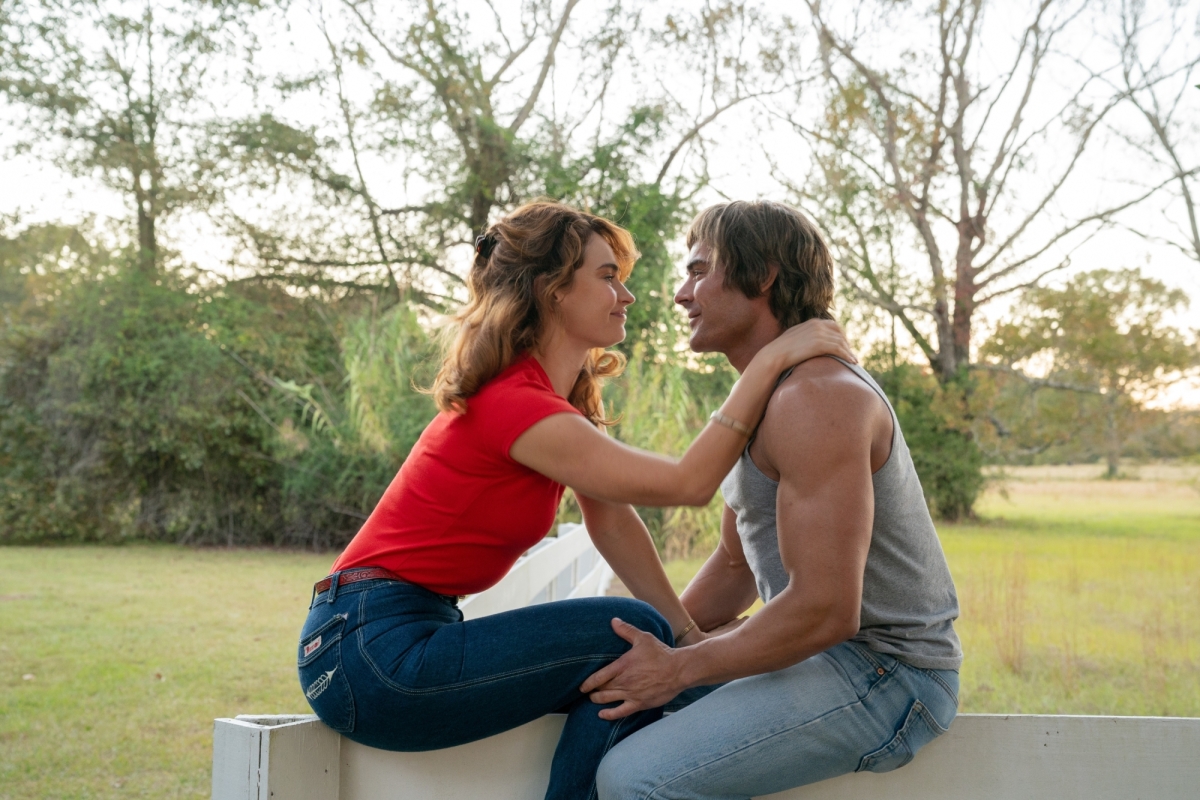
(L-R) Lily James, Zac Efron. Photo by Brian Roedel. All Rights Managed. Courtesy of A24.
"The pace of production was super quick because we used simple camera, grip and lighting equipment – no techno cranes or remote heads, just 35mm cameras, operated handheld or on simple dolly and tracks, with old-school lights and very little by the way of LEDs on dimmer boards."
Looking back at his experience of shooting The Iron Claw, Erdély concludes, "It was amazing to watch the sheer athleticism of the actors flying around the ring, although I really had to control my own emotions and stay calm during the more tender and moving moments in the film.
"I also enjoyed working with Sean again, who is so good-natured and a supremely talented filmmaker. And I absolutely loved the experience of shooting on film again. I think we'll shoot film as long as there is a lab that can develop it and a manufacturer producing it. It just looks so good, especially on important and existential stories like this."